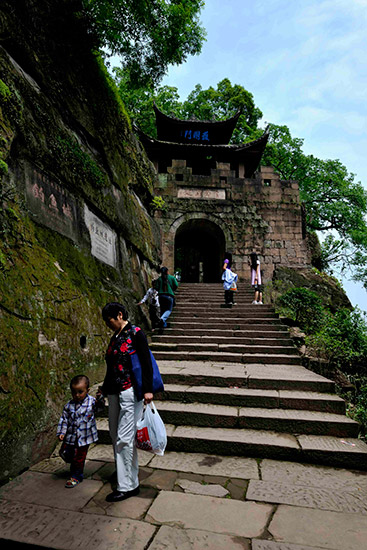A historical cultural crossroads makes tracks to the future
( China Daily ) Updated: 2017-07-08 07:33:19
 |
|
The Diaoyu Fortress is one of the great ancient battlefields of China, located on the Diaoyu Mountain in Hechuan district, Chongqing.[Photo by Huang Jinguo/China Daily] |
"Hechuan's CPC leadership understand the importance of development. The district has 10 vocational schools training 12,000 technicians every year," Teng said.
Hechuan's automobile and information industries will soon generate 100 billion yuan ($14.7 billion) a year each.
"The change has been amazing. China was quite poor 30 years ago, but now it contributes 30 percent of world economic growth," said Zhang Yun of the Chinese Academy of Social Sciences.
The changes are no longer a consequence of war, but political successes which will surpass the feats of the Tang and Song dynasties and once again change the course of world history, he said.
Chongqing, the largest metropolis in western China, is home to 30 million people and a focus of rejuvenation. The municipality has reported China's fastest economic growth for the past three years. More than 200 of the world's top 500 enterprises have branches in the city.
The first China-Europe freight train left Chongqing in 2011 and the railway has since been incorporated into the Belt and Road Initiative.
Last month, trains began rolling along the Chongqing-Singapore railway line, which links China's hinterland with Southeast Asia.
Teng's company will soon move to a site near Hechuan railway station on the Chongqing-Europe rail line to make it easier to get its products to international markets.
The route the Mongolians advanced along hundreds of years ago now includes 60 percent of the world's population and generates 30 percent of the world's GDP. It is being renewed by investment, trade, commerce, tourism and cultural activities.
Xinhua
|
|
|
|
|
|
|
|

























 Raymond Zhou:
Raymond Zhou: Pauline D Loh:
Pauline D Loh: Hot Pot
Hot Pot Eco China
Eco China China Dream
China Dream China Face
China Face






